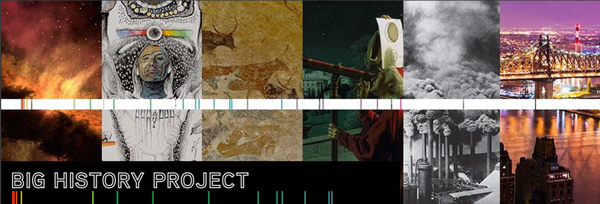Identifying and Navigating the Levels or Scales Problem in Teaching and Learning (Bob Bain)

Over the past twenty-five years, I have been thinking about and working on an instructional and historiographic problem that historian Thomas C. Holt called the “levels problem” in his article “Marking: Race, Race-Making and the Writing of History” (American Historical Review 100, no. 1 [1995]: 1-20) - i.e., the challenge historians face in “establishing the continuity between behavioral explanations sited at the individual level of human experience and those at the level of society and social forces.”
I first became aware of the problem of making connections among “levels” or “scales” of experience while working on a historical study of the ways that the educators, juvenile court officers, and area therapists in an American city had treated adolescents and children labeled as “problems.” While working with archival papers of individuals in each of those groups, I struggled to situate ideas and actions within the larger knowledge and practices of their respective professional communities as well as within the dramatic social changes occurring in the United States and the world between 1880 and 1940. It was hard for me to simultaneously keep in mind and connect the actions of individual actors and the larger forces at work in the professions, communities, society, and the world.
It was, however, while teaching world history in a public high school that this problem became central. I was struggling almost daily to help my students understand global, national or institutional systems, structures, and forces while maintaining their focus on human agency, ideas, and historical contingency. I developed practices and cognitive tools to help students dig deep into primary sources grounded in my familiarity with curricular projects such as the Amherst Project and research on historical cognition by scholars such as Sam Wineburg, Peter Seixas, and Peter Lee. In early studies of my instruction (e.g., “Rounding Up Unusual Suspects,” Teachers College Record 108, no. 10 [2006]: 2080-2114), I described and analyzed the various practices that supported students in sourcing, corroborating, and contextualizing documents created by individuals, evaluated the authority hidden in history classrooms, and suggested ways to expand students’ capacity for perspective taking, particularly as it pertained to race, class, and gender.
However, it was very different when I asked my students to situate human actions within larger trans-regional and global contexts. They had great difficulty in connecting the specificity coming out of their study of primary sources to more abstract concepts such as global systems, social structures or prevailing pre-suppositions. They typically personified larger forces (e.g., “the middle class wanted capitalism”) or abandoned ideas of human agency to offer deterministic explanations of action. They had even greater difficulty using primary sources when working with aggregated data that showed large scale patterns of ecological, environmental, economic, or demographic change.
As a student of history, I was familiar with the Annales School and Braudel’s parsing history at three different levels and loved Emmanuel Le Roy Ladurie’s claim that all historians were either parachutists or truffle hunters. However, as a teacher of history, I soon recognized that my students needed to be both parachutists and truffle hunters to make connections among Braudel’s levels.
Indeed, as Holt warned, history that privileges macro forces, as much world history teaching has done, yields an “atrophied, lifeless, passionless” history that tends towards historical inevitability. However, history and history teaching “isolating micro-level phenomena renders human behavior simply unknowable.” The challenge of making connections and linkages across the different scales of time and space is key.
Thus, the levels or scales problem in history education asks: How do teachers and curricula represent temporal and spatial scales for students? How do students experience events at different scales? What do they see and think about scales? How might we enhance students’ capacity to shift scales and make connections between “the individual level of human experience and those at the level of society and social forces”?
In taking up these questions, I have helped to develop instructional resources that made scales or levels thinking visible, such as the model curriculum World History for Us All, and have analyzed the challenges of scale shifting in a number of publications.
Currently, I am working in the Big History Project, a curricular research and development project that has constructed a course in big history for secondary students around the world to help them travel through almost 14 billion years of time from the Big Bang to the future. While not abandoning history education’s focus on reading like historians – there are ten document-based investigations in the course – the course makes switching and connecting temporal and spatial scales a central practice.
Space does not allow me to discuss in detail the BHP approach to navigating the levels or scales problem, but I encourage you to take a look for yourself at http://www.bighistoryproject.com.


